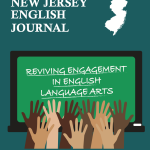The search for an assignment that makes second-semester seniors want to read more is like the hunt for a unicorn—a noble quest that’s likely to fail.
But this year, my students and I captured the unicorn with a project that invited them to research the benefits of reading and share their findings with a global audience.
Over 1000 people read my seniors’ writing over a three-day period this month. And after the assignment’s conclusion, several students reported that they read more now than ever before.
In early February, we tweeted out this student-created digital flyer, which contains links to my students’ individual blogs, since visited by readers worldwide. Each student’s blog post describes a specific benefit of reading.
My blog was visited 17 times today! And one of my readers is from the U.K.! – a 12th grade student
I’ve included a photo of the top of the digital flyer here, but you can view the full flyer on Smore.

How They Went Viral
- They created content that their audience values.
- They packaged that content in a manner that would reach and appeal to their intended audience.
The “Reading Reasons” Assignment
Inspired by an assignment Kelly Gallagher describes in his book Reading Reasons (2002), I asked students to investigate the research-based benefits of reading.
My version of the assignment had several stages, summarized briefly below. (For the full details, see this assignment sheet.)
- Select a persuasive contemporary article about the benefits of reading.
- Read and annotate the article carefully in order to lead a discussion about your chosen “reading reason” with your classmates.
- Write a blog post about your “reading reason” that incorporates peer feedback from the class discussion.
- Promote your blog post via Twitter using our class hashtag: #SESNH.
My not-so-secret agenda was for the assignment to expose my students to the many benefits of reading and to inspire them to read more.
Matching Medium to Audience
After students finished the “reading reasons” discussions, I invited the class to consider how to best collect their findings to create a final product (e.g., a classroom poster, a digital product). They decided that the best way to share their work would be to create a visually-appealing, digital collection of their writing that they could share via social networks.
They collectively explored a variety of digital tools on a wiki created by Troy Hicks. At this point, I invited students to participate in the following ways:
- A small group of students volunteered to create the final product over a few class periods using Smore.
- Another group of students researched different Twitter groups they thought would be interested in reading their work.
- A third group of students chose to use the class time to read silently. Huzzah!
Unanticipated Challenges
This is not to say that the “reading reasons” assignment was met with total enthusiasm. Though I’d hoped to scatter these discussions over several weeks, unforeseen schedule changes meant that some weeks, students participated in consecutive days of “reading reasons” discussions. Some students complained that we were doing too much talking about reading and not saving enough class time to actually read.
Others struggled to convince their peers that reading was valuable. The more reluctant readers in the class responded to these presentations repeatedly with comments like, “Yeah, we know reading is important, but we just don’t want to do it.” At times, student discussion leaders didn’t know how to respond to their peers when asked for information beyond the scope of their research.
And clearly, as their English teacher, I was not without bias. I tried my best to limit any interjections during their discussions, but sometimes, I couldn’t help myself.
I worried if the assignment was doing more harm than good when a student candidly shared a disheartening discovery: “I think this assignment is actually making me want to read less.”
When I recently asked him for permission to share his comment in this blog post, I also asked him to explain it further. He said he’d endured years of teachers reminding him of the importance of reading, and he’d thought he’d outgrown the topic. He couldn’t believe that I was not only furthering the tradition of English teachers past, but upping the ante by forcing him to research it himself. However, I took it as a victory when he shared that in the past, no one had explained the benefits of reading, and that he did learn several specific ones from this assignment.
Feedback from a Global Audience [ . . . ] Read More






